ASRock B550 Taichi Review: The $300 B550 Motherboard with Chutzpah
by Gavin Bonshor on August 21, 2020 3:30 PM EST- Posted in
- Motherboards
- AMD
- ASRock
- Taichi
- AM4
- Ryzen 3000
- Ryzen 3700X
- Ryzen 4000
- B550
- B550 Taichi
Visual Inspection
The ASRock B550 Taichi is as ornate as any model from its Taichi series, with an elegant bronze and black color theme throughout. The rear panel cover includes separate RGB areas for the Taichi logo and where the model and is primarily gold in color, as well as the power delivery heatsink. While not a conventional color, the lower portion of the board has black and bronze PCIe armor with a lightly embossed Taichi cogwheel inspired patterning. This cogwheel patterning stretches to the chipset heatsink, with a very classy finish and also includes some RGB LEDs. On the underside of the right-hand section of the board is a long RGB LED strip that provides a nice under glow.
Looking to the boards PCIe, and the top two full-length slots operates at PCIe 4.0 driven directly from a Ryzen 3000 series processor. When the top slot is the sole one active, it runs in x16 mode, however if both are populated, it splits into x8/x8. The other full-length slot operates at PCIe 3.0 x4, and sandwiched in between the full-length slots are two PCIe 3.0 x1 slots. There are a pair of M.2 heatsinks which fit nicely into the board's bronze and black aesthetic - the first one is a top-mounted PCIe 4.0 x4 M.2 slot, while the bottom M.2 slot operates at PCIe 3.0 x4.
Along the bottom of the B550 Taichi is a basic overclockers toolkit which includes a two-digit LED Debugger, a power button, a reset button, and a small clear CMOS button. Located around the board are seven 4-pin headers which are split into three different cooling segments, one for a CPU fan, one for an optional CPU fan and a water pump, and five for regular chassis fans.
The B550 Taichi also has eight SATA ports, which is the only current B550 model to include this, with four of the eight controlled by the chipset and the other four made available from the use of an ASMedia ASM1061 SATA controller. The four SATA ports controlled by the chipset support RAID 0, 1, and 10 arrays.
Located at the top right-hand corner are four memory slots which include support for up to DDR4-5000 memory, while a total of 128 GB can be installed with official support for 32 GB UDIMM memory. The B550 Taichi does include support for ECC and non-ECC memory, although users opting for ECC memory should note that it will operate un-buffered modules.
The power delivery on the ASRock B550 Taichi is made up of a 16-phase design with fourteen phases for the CPU, and two for the SoC. ASRock has opted to use sixteen Vishay SiC654 50 A DrMos power stages which makes up both the CPU and SoC sections. The PWM controller of choice is an Intersil ISL229004 which is an 8-channel controller which means the power delivery is operating in a 7+1 configuration. The B550 Taichi's doubler of choice is the Intersil ISL6617A with seven doubling up the fourteen CPU power stages and one doubling up the two SoC phases. Providing power to the power delivery is a pair of 12 V ATX CPU power inputs.
Cooling the large 16-phase power delivery is a pair of bronze-colored aluminum heatsinks which are interconnected by a single heat pipe. On both of the heatsinks is a relatively thick thermal pad with fairly deep impressions which shows a good mounting between the power delivery and the heatsinks.
For audio, the ASRock B550 Taichi is using a Realtek ALC1220 HD audio codec with five Japanese Nichicon gold audio capacitors which are specifically designed for audio solutions such as this. To improve the quality of the front panel audio header, ASRock has included a Texas Instruments NE5532 headset amplifier which can drive headphones and headsets up to 600 Ohm. The audio PCB itself includes a faint yellow separation line from the rest of the board to help protect the audio componentry from electronic magnetic interference, although the ALC1220 HD codec does not include a separate dedicated EMI shield.
On the rear panel I/O is a variety of input and output with a single USB 3.2 G2 Type-C, one USB 3.2 G2 Type-A, four USB 3.2 G1 Type-A, and two USB 2.0 port, with all of the rear panel USB coming with ESD protection. The board's networking consists of a single Intel I225-V 2.5 GbE Ethernet controller which powers the single RJ45 port, while the two antenna ports are for the Intel AX201 Wi-Fi 6 interface which includes support for BT 5.1 devices. Onboard audio is provided by the way of five 3.5 mm audio jacks and a single S/PDIF optical output powered by a Realtek ALC1220HD audio codec. Finishing off the rear panel is a clear CMOS button, and a BIOS flashback button which can be used to update the board's firmware without a CPU/memory/display installed.
Also present on the rear panel is a pair of video outputs that consist of an HDMI and DisplayPort 1.4 output. This allows users to use integrated graphics when AMD puts the next-generation APUs on retail shelves.
What's in the Box
Included within the ASRock B550 Taichi accessories bundle are four SATA cables, an Intel AX201 Wi-Fi 6 antenna kit, an ASRock branded Torx screwdriver, and two M.2 installation screw kits. Other accessories include a quick installation guide and a driver/software installation disc.
- Quick installation guide
- Driver and software installation disc
- ASRock Torx screwdriver
- 4 x SATA cables
- 2 x M.2 screws
- 2 x M.2 standoffs
- ASRock Taichi postcard
- 2 x ASRock velcro cable ties
- ASRock Taichi sticker set


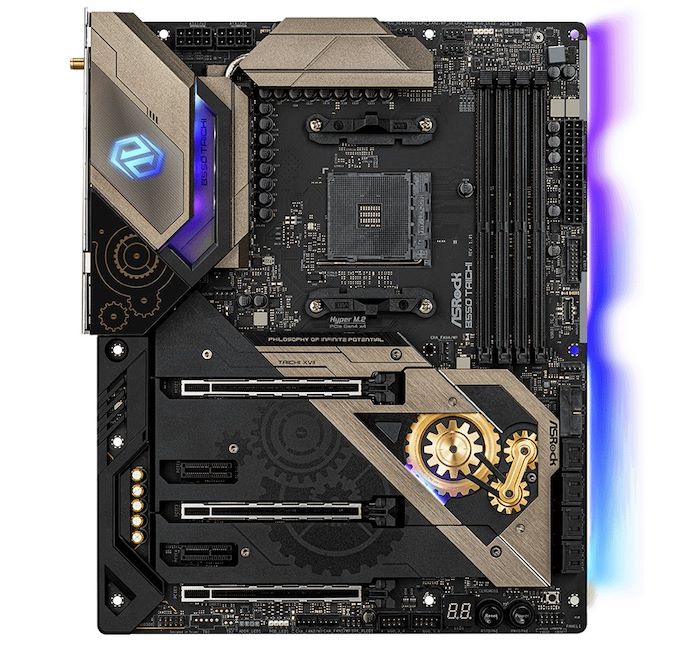
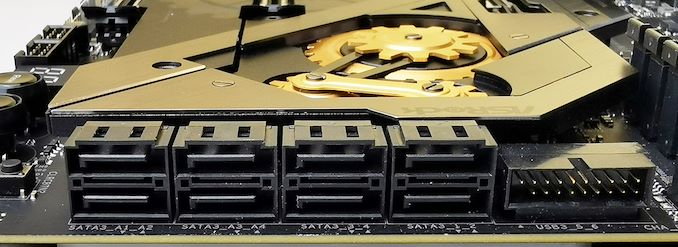
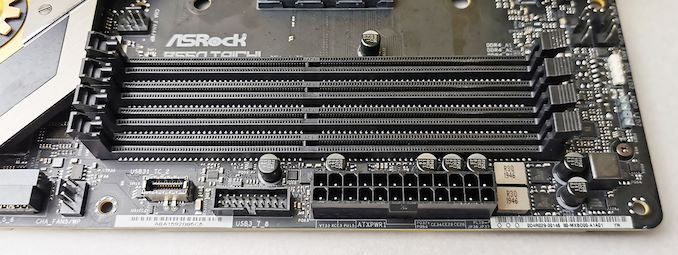
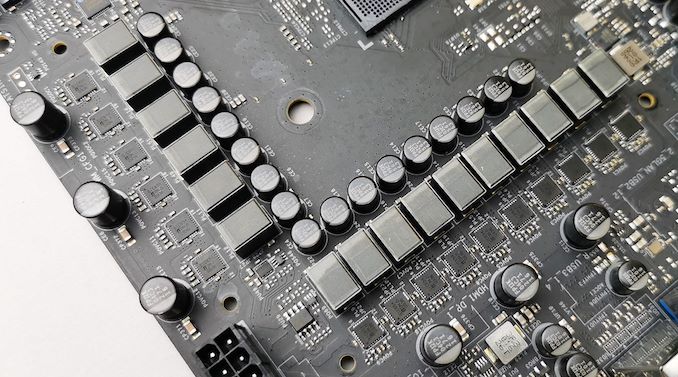
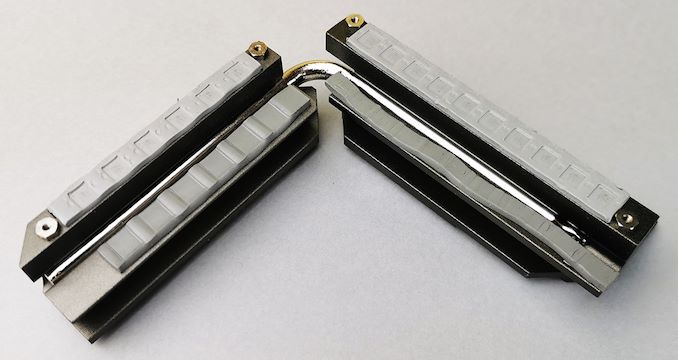
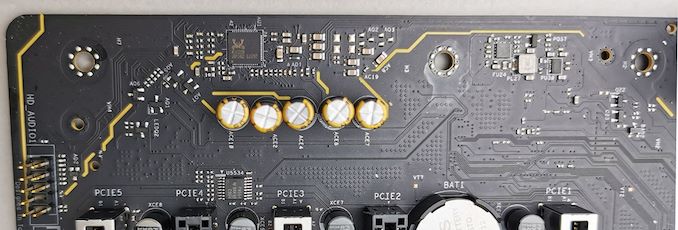

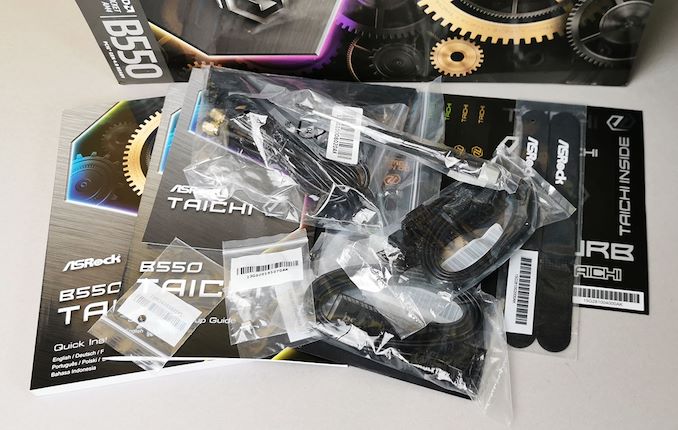








61 Comments
View All Comments
Gigaplex - Wednesday, August 26, 2020 - link
The uncertainty certainly is annoying, but if I bought that board and then some time later had a need to install a PCIe x8 card, I'd be a bit frustrated.(I installed an LSI 9207-8i about a month ago on a motherboard I've had for >8 years, it was lucky I had an x16 slot free)
Tpoking - Saturday, August 22, 2020 - link
What's that old saying "Intel tax"? Try AMD tax only your getting less for more with this abomination and any AMD it's build over the past two months. Excuses with current event don't stick comparing the other way around. AMD is not value when considering anything but budget Matx boards and last Feb choosers.antonkochubey - Saturday, August 22, 2020 - link
Yeaaaah because Z490 boards (B550 is equivalent to Z490 - allows x8/x8 split, has PCIe 3.0, allows overclocking) can be found for $42 or for free on the side of the road /sSpunjji - Monday, August 24, 2020 - link
Great post, next time try adding some facts.Oxford Guy - Saturday, August 22, 2020 - link
Let's see...Midrange chipset at premium price, for no justifiable reason? Check.
Tons of VRM phases for CPUs that shouldn't even be overclocked? Check.
Excuses? Hmm...
antonkochubey - Sunday, August 23, 2020 - link
This midrange chipset matches Intel's highest-end chipset in it's feature set, and exceeds in some (PCIe 4.0 and CPU-direct first M.2).MrVibrato - Sunday, August 23, 2020 - link
I think it will be easier for you to use your fingers when counting PCI lanes.Spunjji - Monday, August 24, 2020 - link
The VRM thing really bugs me.lorribot - Sunday, August 23, 2020 - link
Why?Why 2.5GbE? No routers supplied by ISPs support this so yuo would need to spend a stack on a seperate switch. I am not entirely sure what the use case would be for 2.GbE and what sort of data would need to be transferred over that link. When there is also a top end WiFi 6 built in as well. One or other of these expensive features will be unused.
This board, like many of the B550 boards, makes no sense except in very few use cases, noise or heat, over an X570 based board that brings more future proofed support for PCI 4.
the top price for a B550 board should be around £/$70-100 and no more but there is massive shortage of boards in that price bracket.
A £/$75 board would give a good entry in to AM4 for those still on old Haswell/Broadwell CPUs still looking for a value upgrade path in the AMD productstack.
Gigaplex - Sunday, August 23, 2020 - link
I use 2.5GbE. Gigabit is the single biggest bottleneck for NAS speeds. I use a single SSD in my system, mass storage is on the NAS. I don't want a loud mechanical drive sitting right next to me. I also don't even have a switch, I connect the two endpoints directly.Switches aren't going to be commonly available at a low price until 2.5GbE is ubiquitous. For that to happen there's going to be a period of time where some people like you keep complaining about having faster ports with nothing to plug in to.
You want the cheap motherboards you're asking for? A520 is for you.